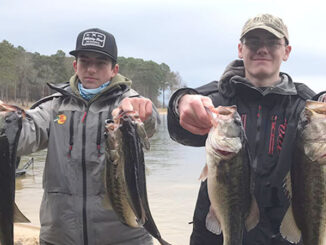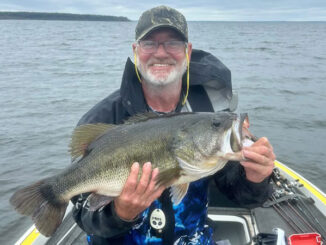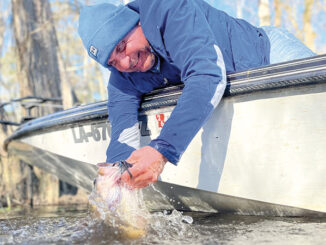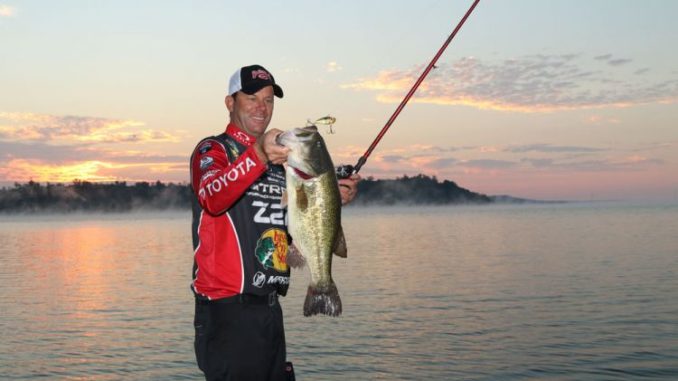
Angling pros share some do’s and don’ts to maximize your time on the water and catch more fish.
Days grow shorter; appetites grow larger. Water temperatures will be falling, but bass aggression is spiking.
That’s the game plan for the annual fall ‘gorge-fest’ and the state’s premier fishery, Toledo Bend, provides awesome theater for showcasing this seasonal opportunity — and learning a few pointers on how to maximize your productivity.
There are lots of ways to break this down, so let’s keep it simple with a sampling of what to do — and what not to do — during the fall feeding frenzy.
The do’s
Fish the creeks: This is where you’ll find the majority of the shad, which head toward these protected areas sometime in late-September or early-October. The formula is simple: Bass follow the food. But FLW regional pro Stephen Johnston said the degree to which this proves true may be surprising.
“A lot of times people don’t realize how far into the creek the fish will follow the shad,” he said. “You want to follow the creek as far as you can and fish shallower than you might normally think to fish.
“The bank of the creek may be a foot or two deep, but the creek may be 3 ½ to 4 feet. If you can find a little dog leg or a creek bend before it gets too shallow to get a boat in, you don’t want to go too far, but you want to go far enough so you have the deepest part in there.”
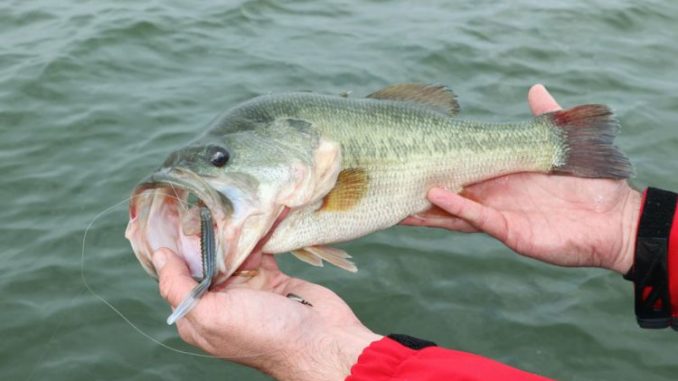
Start early: The fall feeding motivation could yield good action any time of the day, but the first gilded rays of sunshine to fall upon the water will almost always spur a rally you don’t want to miss.
As Bassmaster Elite pro Kevin VanDam explains, bass do their best work in low light, so don’t spend too much time stirring your oatmeal. Get out there and get after them.
“This is a high-percentage time to cover water, fish fast and catch fish while they have their guard down and they’re more aggressive,” VanDam said. “They’ll chase baits farther, and the strike zone gets bigger.”
Pay attention to weather patterns, as those pesky fall cold fronts can fiddle with the schedule. Basically, look for even greater feeding activity ahead of and during a front’s passage, but once post-frontal conditions bring the dreaded blue bird skies, expect the bite to fizzle until that high pressure moderates and a few more clouds roll in.
Keep a variety of baits on deck: Topwaters are one of your best bets for fall fishing, because you can cover lots of water and quickly locate the most aggressive fish. Along with those walkers, poppers, buzzbaits and frogs; mix in a hardy subsurface element with jerkbaits, crankbaits and swimbaits. (Tip: Feathered trebles enhance interest and often close the deal.)
Match forage color — Fall bass won’t turn down an easy bluegill meal, and if you spot them chasing bream, your greens, browns, purples and black and blues are good soft plastic choices. However, most of this season’s feasting focuses on shad, so white, gray, silver and chartreuse are the right selections.
Mix and match — Elite pro Aaron Martens likes throwing 3-inch swimbaits toward schoolers, but when the fish are staying outside of his reach, he’ll use an oversized swimbait head, maybe a ½- to ¾-ounce, to get the long casts he needs.
Check the basement: Elite pro John Murray points out that in deeper areas, the larger, more experienced fish may patrol beneath the surface fracas created by smaller bass schooling on bait pods. As the little guys blast through the bait with reckless abandon, they leave several wounded fish fluttering to the bottom — where they’re easy pickings for ones that don’t want to run upstairs.
Keep an eye on where the bait schools are moving and run an underspin, a grub or a small swimbait below the forage, and you’ll often pick up a nice bonus to your day.
The don’ts
Stay off the flats: “We fish a lot of flats, but in fall, we stay off the flats,” Johnston said. “Some flats may have scattered grass, but stay in the creek channels because that’s where the bait and the fish are moving.”
Don’t assume big meals: There are plenty of big baitfish to be had each fall, but sometimes bass get keyed in on tiny forage, like the shad born in the spring, which are still pretty puny by fall. No sense arguing with this OCD preference; just go with it and do what you gotta do to fit into the program.
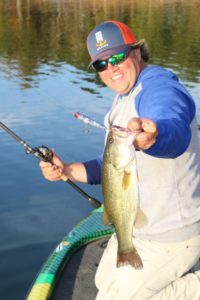
“You want to match the hatch, so if shad are 1 ½ or 2 inches, you want to match that size with something like a Strike King KVD 1.0 or 1.5 squarebill or a small spinnerbait like the Strike King Pond Magic,” Johnston said.
“I see a lot of people throwing a ½-ounce or ¾-ounce spinnerbait and they’ll have big willow leaves on there and it just doesn’t look right compared to the size shad the fish are eating. A lot of times in the creeks, you can see the dead shad that the fish have killed floating. Just pick one up and take a look at the size and match your bait to it. It’s better to go under in size than to go over.”
Don’t forget finesse: Bassmaster Elite pro John Murray cut his teeth in Western fisheries before moving east of the Mississippi, so a dropshot is standard issue for much of the year. He particularly likes this finesse rig during the fall period because bass often move super shallow during the midday hours and park near stumps, logs, laydowns and dock pilings until they feel like getting after the shad parade.
During these siestas, targeted presentations like a dropshot can be deadly. But don’t stop there: Murray also likes swimming a dropshot — essentially, casting toward a bait school and reeling it just above where he thinks the fish are holding. It’s a presentation that allows you to show the fish a different look compared to what they’re seeing a lot this time of year.
Don’t encroach: This is not bed fishing, so keep your distance or you’ll blow the game before it begins. Johnston’s advice: Chose your spots wisely, so you allow yourself maximum opportunities with minimal risk.
“I’ll use my Minn Kota Talons and anchor the boat so I can fish two bends of the creek,” he said. “You don’t want to get up there and spook the fish, so anchor up and make long casts.
“Make sure you fish your way into the creek, because the water can get really clear back in the creeks and if you get up on top of the fish, they will scatter.”
